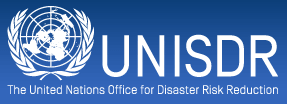Central American countries are taking substantive steps to implement the Sendai Framework for Disaster Risk Reduction (DRR) 2015-2030, which was adopted in March 2015, at the Third UN World Conference on Disaster Risk Reduction in Japan.
The Framework calls for a holistic approach to the threat of disasters and for incorporating integrated disaster risk management (DRM) into existing national development priorities and policies.
 20 June 2015: Central American countries are taking substantive steps to implement the Sendai Framework for Disaster Risk Reduction (DRR) 2015-2030, which was adopted in March 2015, at the Third UN World Conference on Disaster Risk Reduction in Japan. The Framework calls for a holistic approach to the threat of disasters and for incorporating integrated disaster risk management (DRM) into existing national development priorities and policies.
20 June 2015: Central American countries are taking substantive steps to implement the Sendai Framework for Disaster Risk Reduction (DRR) 2015-2030, which was adopted in March 2015, at the Third UN World Conference on Disaster Risk Reduction in Japan. The Framework calls for a holistic approach to the threat of disasters and for incorporating integrated disaster risk management (DRM) into existing national development priorities and policies.
Central American governments and members of the DRR community met in El Salvador, from 18-19 June 2015, for the third Consultative Forum of the Central American Policy for Integrated Risk Management (PCGIR), which aimed to help assess best practices and guide future actions.
Speaking at the event, Margareta Wahlström, Special Representative of the UN Secretary-General for DRR, emphasized that DRR must be “a key component of development in order to secure sustainable results.” She underscored that Central America, a region with over 43 million people, is the second most vulnerable region to climate risks, after Asia. According to estimates by the Economic Commission for Latin America and the Caribbean (ECLAC), disaster losses over the past three decades have topped US$64 billion in the region.
Salvador Sánchez Cerén, President of El Salvador, urged “sustainable development that integrates climate change adaptation and risk management,” noting that society’s progress cannot be “extraneous to environmental sustainability.” El Salvador has created a new cabinet to coordinate government work on environmental sustainability and disaster vulnerability.
Ricardo Mena, UNISDR’s Regional Office of the Americas, noted that the region has been advancing the issue of risk management in recent years, while acknowledging that economic losses from disasters are increasing. He said this should provide “a wake-up call” for decision makers to prioritize risk management and invest more to prevent worsening negative impacts in the future.
The forum was part of a wider process to help countries assess the way forward since the adoption of the Sendai Framework, and was preceded by meetings in: Honduras in May; Guatemala from 1-2 June; Panama from 4-5 June; and Costa Rica from 8-9 June. The National Disaster Risk Management System of Central America led these events, which provided input into the PCGIR. Another event held on 11 June in Colombia highlighted links between sustainable development and DRM, and saw the launch of the Spanish-language version of the UN Office for DRR’s Global Assessment Report on Disaster Risk Reduction 2015 (GAR).
The main objectives of the workshops were to contribute to the development and optimization of national development priorities that incorporate comprehensive DRM. Participants compared key aspects of the Sendai Framework with national policies and with the PCGIR to ascertain synergies for effective implementation.
The region has been addressing these issues for quite some time. In 1987, governments created the Coordinating Center for the Prevention of Natural Disasters in Central America (CEPREDENAC) to strengthen disaster prevention and preparedness through regional planning, information sharing, training and coordination. [UNISDR Pre-Forum Press Release] [UNISDR Press Release on Statement of Margareta Wahlström] [UNISDR News Story on Central American Workshops]